"Often retaining good people isn’t about paying them more money, it’s just about treating them properly." Finding and retaining skilled people is one of the biggest challenges that many construction companies face. The construction workforce is highly mobile and many companies have a high turn-over of employees. Some managers have an attitude of ‘if they don’t like it they can leave’, or ‘we can’t afford to give them what they want so let them go’. This attitude is costly to the company, and often retaining good people isn’t about paying them more money, it’s just about treating them properly. Why should construction companies care when people leave?Every Construction company seems to complain of a lack of skilled people. This problem is often exacerbated when our skilled employees leave to join our competitors, or in some cases leave the construction industry. "It can cost 16 to 20 % of a persons annual salary to replace them" Replacing employees is an expensive business. Costs include; recruitment, training, uniform costs, sometimes transport, lost time and production while a replacement is found and lost production while the new recruit finds their feet. (According to one report it can cost 16 to 20 % of a persons annual salary to replace them - read more.) Then there are hidden costs such as the knowledge the person leaves with – which for a senior person on a construction project could be information required for variation claims, knowledge of clients, client relationships, etc. Losing a senior competent and knowledgeable person can be difficult to replace as these people are often in short supply. Losing people often places an extra workload on those that remain behind. This could mean they become overworked and leave the company as well, or it could result in them not being able to carry out their duties properly resulting in mistakes and accidents on construction projects. High Employee turnover? The sooner you know the better. How do contractors retain good employees?"It's not all about money!" The first answer that springs to mind is money. However, you are seldom able to outbid the highest bidder. Anyway do you want to outbid the highest bidder? This is usually an unsustainable practice, it can upset other employees when they find out a new employee is being paid more, and higher wages drives the cost of doing business up. Do you want to employ someone who is only interested in staying if the money is right? Nevertheless, you do need to ensure that the salaries you are paying are market related. However, most employees don’t leave solely because of money, unless the pay is really poor. There are a number of ways to retain employees which don’t necessarily cost lots of money. Usually just a little effort from management: "Employees want to feel valued."
"People want to progress and see opportunities"
"Success is empowering, infectious and stimulating. Everyone wants to be part of a winning team"
"Employees want to feel part of a winning brand,"
"Who wants to be frustrated by having their work interrupted by equipment breakdowns, or having to continually repair broken equipment?"
Information in this article is contained in 'Building a Successful Construction Company: The Practical Guide' by Paul Netscher Good companies are built with good peopleStrong companies are generally built by good people. We are usually only as strong as our team. So invest in your team. By the time a person hands in their resignation it’s difficult to dissuade them. They probably have already explored other alternatives and many would have signed an employment contract with another company. How do you retain your good employees? In future articles I’ll discuss other actions you can implement. #constructionmanagement #constructionskills #constructionprofessionals #contractors Other similar articles by the author: Providing feedback to your construction team. Why construction companies should be concerned about their reputation? Understanding what impacts your company’s reputation. (Written by Paul Netscher the author of the acclaimed books ‘Successful Construction Project Management: The Practical Guide’ and ‘Building a Successful Construction Company: The Practical Guide’. Both books are available in paperback and e-book from Amazon and other retail outlets. This article is adapted from information included in these books. Visit Construction Management Services on this website to see how Paul can help you)
© 2022 This article is not to be reproduced for commercial purposes without written permission from the author.
28 Comments
"Completing a construction project successfully requires a team effort" When construction projects don’t go according to plan the contractor is often blamed for the problems. However, completing a construction project successfully requires a team effort between the client/owner, designers, the client’s appointed project manager (if there is one), the main contractor and their subcontractors. Failure by one of the parties can lead to the project not achieving its outcomes. Last week I published an article; ‘how can clients ensure their projects meet their expectations?’ In this week's article I would like to focus on the role of the designers. Here I include architects, engineers of various disciplines, landscape architects, interior designers, etc. In some cases the architect or engineer may also be appointed as the client’s principle agent which may require them to fulfil an overall project management role, but, I’ll focus on this in my next article How can the owner's Project Manager ensure the success of their construction project.. What can designers do to ensure the successful outcome of their construction projects?I’m sure we have all been on construction projects where drawings have arrived late, changes have been made to completed work which then required rework and projects that have been difficult and expensive to construct because the design hasn’t taken cognisance of the local conditions. We have probably also seen grandiose projects which have been inappropriate to the client’s needs and brief. Often this is a result of a poor or weak design team. So how can designers assist to ensure projects successfully achieve their outcomes? "Designers must ensure that they and the client are both on the same page with common project expectations"
"Designers must realise that it is their name on the project." Case study: Recently I presented a webinar on ethics in construction. This webinar dealt more than just with normal fraud and corruption. I illustrated how delivering poor quality was also poor ethics. I also discussed how poor designs which did not meet standards and specifications, designs that were flawed, and designs which were not fit for purpose was bad ethics by designers. At the end of the webinar a designer posed a question and stated that often designers were forced by clients/owners to compromise the design, cut costs, and take short cuts. What could designers do in these cases. My answer was simple. When problems develop later after project completion usually the contractor is blamed and called back to fix the issue. If the contractor can prove it's a design fault then the designer will be held liable. Fixing a design issue will cost the designer, whether that's directly or through their insurance. Blaming the client for a design fault which arose because the client insisted the designer reduce costs and compromise the design will never be accepted as a legitimate excuse, or help the designer avoid liability for the problem. Designers must realise that it is their name on the finished project. The project will stand as an advertisement for their work. Who wants to employ a designer that delivers projects which blight the neighbourhood? Who wants to be known as a designer that delivers substandard projects, perhaps projects that are unsafe or that don't meet acceptable standards? No designer wants to be called back to a completed project that has problems - problems caused by a poor design or inadequate detailing. Designers must be proud of their projects.
"Designers must become more discerning, understanding their clients, and understanding project budgets."
"Designers should promptly advise clients when changes to the design could impact the project budget"
An essential book for clients and their project managers. Good design teams are invaluable to the success of construction projectsA well briefed and coordinated design team with the right skills can be invaluable to the success of a construction project. Having a substantially completed design available before construction starts usually allows the client to develop a more accurate budget, get more accurate pricing from contractors and results in fewer delays during construction. #constructionprojectmanagement #constructiondesign #constructionmanagement To read further on this topic visit: Improving construction productivity with Dr. George F. Jergeas For other similar articles by the author read: In construction it’s important to know your clients. Do your construction materials meet specification and are you installers competent? Will your construction project be completed on schedule? (Written by Paul Netscher the author of the acclaimed books ‘Successful Construction Project Management: The Practical Guide’ and ‘Building a Successful Construction Company: The Practical Guide’. Both books are available in paperback and e-book from Amazon and other retail outlets. This article includes information from a third book which will be published later this year. To see how Paul can help you visit: Construction Management Services) © 2022 This article is not to be reproduced for commercial purposes without written permission from the author.
‘Why don’t many construction projects meet owners’ expectations?’ Over the course of the last week I posed the following question on LinkedIn; ‘Why don’t many construction projects meet owners’ expectations?’ This article included a link to a KPMG Global Construction Survey which reported that 53% of owners suffered an under-performing project in the previous year. (Read more on the KPMG survey.) Many readers read and liked my questions but few added their comments, which was disappointing. Over the course of the next 2 weeks I’ll discuss my thoughts on why some construction projects aren't entirely successful and how their outcomes can be improved. #constructionprojects #constructionindustry What defines a construction project as under-performing?The KPMG report defined under-performance as: 1. Projects completed late. 2. Projects completed over budget. "Additional criteria to measure construction project performance" In addition, I believe the following should also be added to the criteria: 1. Has the project achieved the desired outcomes – for instance if the outcome was to build a facility that produces 1000 units a day, and the facility doesn’t achieve this target then the outcome wasn’t achieved? 2. Has the project met the required specifications and quality standards? 3. Has the project been executed safely with minimal damage to the environment? 4. Has the project achieved the best use and value of the owner’s resources? "Some construction projects are expensive ‘white-elephants’ or aren’t ‘fit-for-purpose’," Some construction projects are expensive ‘white-elephants’ or aren’t ‘fit-for-purpose’. These certainly cannot count as successful even if they came in under budget ahead of time. White elephant construction projects Project life-cycleMany focus on the construction of a project as purely being the construction process. But the construction phase is only one part of the overall project which consists of; inception, planning, design, construction, completion, handover and operation which includes maintenance and, in some cases, should also include the end of facility life. Unfortunately many of the errors we encounter during the construction phase could have been avoided if the earlier phases were completed correctly. What can be done to make construction projects more successful?When projects go wrong it is inevitably the contractor that gets the blame and the bad press. When it can’t be the contractor the fall-back position is the designers. However, in many cases the problem is because of the client. In today’s article I want to discuss the client’s role in the success of construction projects. How clients can ensure the success of their construction project1. At project inception the client must ensure the right project is built in the right location, at the right time. Unfortunately some projects are ill conceived, are constructed to serve personal or political gain, with little thought to what’s the best use of money and resources and whether an alternative project, or, the project in another location, could have achieved a better outcome. 2. The project scope must be defined correctly, meaning the facility that is designed and built will meet the client’s expectations. 3. The client must have sufficient finance for the facility. This means preparing an accurate budget which includes all the costs and when they will be incurred, as well as the source and timing of the finance. Many projects fail because of insufficient funds. 4. They should have realistic expectations of what they can expect for their budget. 5. Clients need an understanding of the project life-cycle, including operational requirements and costs, including maintenance, the life of the facility and its equipment. 6. They should engage a competent design team, and where necessary project manager, who have experience with similar projects. 7. The designers, project manager and all contractors must be appointed using a contract that has a clear scope of work, clearly articulates what each party is responsible for, and has conditions which are fair, unambiguous, and legally enforceable and which allocates risks to the parties best suited to mitigate them. 8. The client must ensure they timeously procure all the required permissions and permits in compliance with national, state, local and industry requirements. Many projects are delayed or disrupted when permits such as environmental aren’t procured in time. These permits can have a major influence on the size and location of the facility as well as the final process and design, all of which can impact the cost and schedule. 9. Clients must ensure full site investigations are undertaken of the construction project site, especially ground conditions, since some founding conditions can result in major cost and time impacts. 10. A competent contractor should be selected to construct the project who has suitable resources available and that has executed similar projects. Contractors should not be chosen on price alone. Why owners sometimes employ the wrong contractor 11. All finance must be in place and all contractors should be paid on time in accordance with the contract conditions. 12. The client must ensure that the construction project is managed properly. This management includes monitoring safety, budgets, variations, quality and schedule. 13. There should be an agreed construction project schedule which is achievable and allows for normal weather interruptions, takes into account the availability of information, long lead items, approval processes, impacts due to the client’s operations, third party interactions and available access. This schedule needs to be regularly updated and monitored. Why a detailed programme to completion ensures project success 14. The client must ensure that services required to construct and run the facility are available in sufficient quantities in time, so the project isn’t delayed. These could include, water, electricity, transport networks and sewer. 15. At the end of the construction phase the client must have suitably trained staff to manage and operate the facility. They must ensure all project documentation, including warranties and operating manuals are handed over, and all connections and commissioning is completed. 16. Successful construction project delivery demands teamwork and cooperation. If one of the parties fails the project will almost certainly not be successful. Collaboration in construction Clients play an important part in construction project successClients need to become more educated in construction project delivery, use the knowledge of experts, ensure there projects are managed properly through all phases and appoint a competent team based on factors that aren’t just driven by price alone. The 10 Biggest Risks Clients and Owners Face On Construction Projects Next week I will look at the role of designers and contractors on ensuring projects are a success and meet the desired outcomes. How designers can make construction projects more successful Thank you for reading this article. If you found it useful please like or share it. Please add your comments so we can all learn from your experiences.
Other useful articles by the author: What does it take to manage a construction project? Why should we take construction safety seriously? Did you make a difference on your construction project today? © 2022 This article is not to be reproduced for commercial purposes without written permission from the author.
"Managing a construction project isn't easy and requires several skills." Managing a construction project must be one of the most difficult jobs there is. To do it requires a large skill set. Some skills can be learned by attending courses, colleges or universities. Others are only learned through experience, and often the hard way – learning from mistakes! Below are some of the skills I think it takes to manage a construction project. See if you agree. What skills do you think it takes to successfully manage a construction project? How did you learn your skills and how can we improve the skills of our future Project Managers? #constructionmanagement #constructionmanagementtips #constructionprojects Skills required to manage a construction project
"plan the construction process"
"Must be able to manage, work with, and interact with people."
"Project Managers must coach and mentor their team"
"take action to prevent problems from occurring, and solve those that do occur."
Construction teams must be managedIn some cases, on large construction projects, there may be a team to assist the Project Manager, consisting of specialist resources, such as Planners, Quality Control Managers, Safety Managers, Engineers, Contract Administrators, clerical staff, and so on. But even in this fortunate position they must manage the processes, and ensure there is full compliance on the project, therefore they’ll need to understand these processes. The Project Manager will have to delegate and motivate their team, using the skills of the individual members and guiding them towards the common goal. "This book is fun to read and full of examples of what to be aware of with project management." (Reader on Amazon) Every construction project is different"No construction project is exactly the same as the previous one; each is unique, with its own set of problems and parameters." Then just as you have mastered all the problems on one project and successfully completed you move to a new project and do it all over again. Often the new project is for a new client in a different location, working with a new team, with different subcontractors and suppliers. The project could be completely different and result in you using different skill sets. No construction project is exactly the same as the previous one; each is unique, with its own set of problems and parameters. What do you think makes a great construction project manager? Thanks for reading this article. I hope you found it useful. Please share or like so others in your network can read it. Other similar articles by the author: Why we should take construction safety seriously. Did you make a difference on your construction project today? Simple steps to make your construction project more successful. (Written by Paul Netscher the author of the acclaimed books ‘Successful Construction Project Management: The Practical Guide’ and ‘Building a Successful Construction Company: The Practical Guide’. Both books are available in paperback and e-book from Amazon and other retail outlets. This article is adapted from information included in these books. ) © 2022 This article is not to be reproduced for commercial purposes without written permission from the author.
Some weeks ago I posted two articles ‘Understanding what impacts your construction company’s reputation’ and ‘Why construction companies should be concerned about their reputation’. In these articles I mentioned how easily reputations can be damaged, even by individuals in the company, and how this damage can sometimes prevent the construction company from winning further work. At the time someone asked the question; ‘How can a construction company recover from a poor reputation?’ Last week I was reminded of the topic when I saw the following article: A major construction company has been faced with damaging allegations of fraud and bribery so after more than 60 years in business they have decided to change their name. Read more. Now this often happens among micro companies that run up large debts or do work badly, and then the owners reinvent their business under another name and carry on business as usual. This strategy works for them because the companies are so small they have an insignificant audience and a limited history. But I’m not sure this strategy is successful for a giant well known construction company that has made the national news headlines in both bad and good ways. Are clients that gullible that they’ll believe that a new name means a clean reputation? Then, what about the history, the good parts of the brand and reputation that are also being disposed of, doesn’t this count for anything? #constructioncompany #contractors #constructionindustry How construction companies should deal with a damaged reputationMy recommended action when dealing with damage to your reputation 1. Find out the reasons for the bad reputation. It might be a poor safety record, unsatisfactory quality, ill disciple amongst employees, arrogance, frequent disputes and claims against clients or not completing projects on time. 2. Institute damage control – that is, prevent the damage from spreading and fix the immediate problems. Now some large construction companies will get their spin-doctors out and issue press releases and statements. I’m not sure this is totally effective – and if anything it often spreads the bad news more quickly. Sometimes these press statements are issued too soon and don’t deal with the problem effectively, and sometimes more damaging revelations reveal themselves after the statements. It’s wise for senior management to get involved directly with the problem – don’t rely on reports, rather go and visit the problem and talk to the parties’ first-hand. Clients usually appreciate it if they know senior management is taking their problems seriously. It may stop them taking their actions further. 3. Solve the immediate problem. 4. Ensure the problem won’t occur again. This may include dismissing people who caused the problem, introducing new systems into the company to prevent the problem reoccurring, retraining employees, etc. 5. Now the difficult part of the exercise comes! How do you convince your clients that the company has changed? Some of them may have been impacted by the causes of your poor reputation – it may even have cost them money. But before selling the message to your clients and the public make sure that you have definitely resolved the problems and they won’t reoccur. If similar problems reoccur after you have told your clients they won’t, then they will doubt you even more next time you tell them everything is fixed. The economics of referral Rebuilding trust in your construction companyUnfortunately clients can be very unforgiving and it could take time to rebuild trust again. Changing the company’s name is a bit of ‘smoke and mirrors’ which won’t fool most discerning clients, in fact it may make them feel like they are being misled. "Everyone in the company knows what’s been done to fix the problem and prevent in recurring again" 1. It’s important that everyone in the company knows what’s been done and what has to happen in the future. When clients talk to senior management or project managers they must get the same message. That message must be clear and include: 1.1. ‘we made a mistake’ 1.2. ‘we acknowledge our mistake’ 1.3. ‘we have rectified the mistake by….’ 1.4. ‘we have taken the following steps to prevent the problem reoccurring….’ 1.5. ‘remember the good things we achieved in the past, what we did right and our past successful relationship and projects’. Clients need to be convinced that the company has changed and things will be different and at the same time reminded of the things that were done well and worked. 2. Generally the ‘proof is in the pudding’ as they say. So if you can demonstrate a successful completed construction project without the previous problems you are better able to tell your story. However, most clients aren’t naturally going to give you a 2nd chance to win a construction project with them. You may have to do it by giving them an offer they can’t refuse, that is, submit a price that is much cheaper than your competitors – but this could cost you money as your price may in fact have to be below cost, which has its own problems. 3. The best strategy is for senior management to visit major clients to spread the message about the changes and improvements made to the way the construction company will do business in future. Unfortunately often things get blown out of proportion and some clients may not have heard the correct story. However, having said this don’t try and hide, or gloss over, past problems. 4. When tenders (quotations or bids) are submitted ensure that your price is competitive, ensure that you can deliver the construction project to the client’s satisfaction. In addition spell out in your price submission how you will deliver the construction project taking care that the previous problems won’t reoccur. The client will be asking themselves the same questions even before they look at your quotation, so make sure you give them answers that will make them feel confident about using your construction company. Don’t just give them rhetoric, but tailor your answers to their specific project. Remind the client of similar previous construction projects you have done successfully. should you submit a bid with a price less than the project will cost you? 5. Should you be fortunate to be called into post tender (price submission or quotation) meetings with the client make sure senior company management attends. Don’t be scared to bring up the past problems and address these and what will be different on this project. Construction bid clarification and negotiation meetings Rebuilding a damaged reputation in construction is not easyIf this fails to win your old clients back you may have to look for other markets, new clients, then, if all else fails consider rebranding the company completely. But, what do you think? Have you experienced something similar, having to rebuild a company’s reputation? Obviously it’s best to look after your construction company’s reputation and ensure all employees understand how vital it is to maintain the company’s reputation. It’s much easier than rebuilding a reputation that’s been broken. Thank you for reading this article. I hope you found it interesting. Please like or share the article and add your comments and experiences. Other similar articles by the author: Will your construction project be completed on schedule? Construction is a people business. Employ the right people. Why should we take construction safety seriously? Do you want to learn how to manage construction projects successfully"I found that referring to this book was like having my own mentor on tap. Excellent." (Reader Amazon) Paul Netscher has written several easy to read books for owners, contractors, construction managers, construction supervisors and foremen. They cover all aspects of construction management and are filled with tips and insights. Visit to read more. The books are available in paper and ebook from most online stores including Amazon. © 2022 This article is not to be reproduced for commercial purposes without written permission from the author.
"Have you had a worker die on your construction project, or visited a seriously injured worker in hospital?" The impacts of poor safety in constructionHave you had a worker die on your construction project? Have you visited a seriously injured worker in hospital? Maybe you’ve been injured yourself working in construction? What does it feel like? Some of us have had the misfortune of having serious accidents on our construction projects. It’s not pretty – and I’m not talking about the blood and mess. It’s the after effects, the disruption, the scars and loss left behind. #constructionsafety #constructionmanagement #constructionprojects Case study I was a Contract Director for a construction project in a remote part of Africa and while visiting the project, a scaffold that concreters were working on collapsed, resulting in a worker falling onto the broken timbers. A piece of wood penetrated the upper part of his inner thigh, which bled profusely. Fortunately the client had a full-time paramedic on the project, who treated the injured worker, before transferring him to the hospital an hour’s drive away. Since there was so much blood, I was concerned the worker would die, and since we were working in a foreign country, I was also worried about what could happen to us. I had visions of the local police arriving, arresting us, and locking us in the local prison. I had no illusions as to what conditions would be like there. It was certainly a scary thought for all of us. There was, however, a happy ending. The injury wasn’t as severe as it had appeared and the worker returned to work the next day. We were fortunate, since I’m sure if the piece of wood had pierced a major artery, which was probably only centimetres away, the outcome would have been very different. This accident could have happened in any country, and if the worker had died there was the possibility of the Project Manager and I both being jailed if found responsible for the death. In first world countries prisons may be slightly better than elsewhere, and the justice system may allow for a fair trial, however, the consequences of the Construction Project Manager being found responsible for the death of a worker, or member of public, on their project, is still possibly prison time, certainly a heavy monetary fine. Unfortunately very few Construction Project Managers understand this, and it’s probably the reason many don’t take safety as seriously as they should. But let’s put aside the direct consequences to you for a minute, and consider some of the other consequences of an accident on a construction project. What about the workers themselves? What about their families? Workers have an expectation, and a right, they’ll return home from your project in the same health as they started. Families expect to see their loved ones, and bread-winners, return from work at the end of the day, and you, the Construction Project Manager, have the duty of care to ensure this happens. Why do we have poor safety on construction projects?Over the years I have seen huge improvements in safety on construction projects. When I look back to my early years in construction, I shudder to think how we used to do things, and the risks we took with our own lives, and the lives of workers. Safety has changed for the better which means we can all sleep easier at night. How Has Construction Industry Safety Improved Over the Years? However, construction work is a hazardous business and accidents happen easily. In fact, I have often found accidents happen when we least expect them and even when the simplest tasks are being done. "Safety isn’t something that happens naturally." Safety isn’t something that happens naturally on construction projects. Just consider the recent maintenance tasks you did at home or in your garden, I’m sure if you analyse these, you’ll find you didn’t use the correct personal protective equipment, or follow proper safety procedures. I know I’m guilty of numerous safety breaches every time I work around the home and garden! (Most hospitals treat more injuries incurred from DIY projects in the home than other causes.) In fact, if you think about the last time you were driving, did you obey all the rules? When walking, do you stop at the traffic light and wait for it to turn in your favour, or are you impatient and cross as soon as you see a gap in the traffic? (No wonder there are so many injuries from motor vehicle accidents!) We’ve all done these things, so why should we expect to do things any differently at work? If you engage in unsafe behaviour outside the work place, the chances are that most of your workforce does the same thing. How you can improve safety on your construction project"Safety is not just about rules! Safety is about changing behaviour and changing mindsets, including your own." Many hate safety because all they see are rules, expenses and a drag on construction production. But safety is not just about rules! Safety is about changing behaviour and changing mindsets, including your own. And if you want to know about expense and disruption to a construction project, then have a serious accident and you’ll soon know about it! How poor safety costs your construction company money Anyway why should production come before people's lives? "Safety is a team effort that needs support from the whole management team and all the workers. To achieve this, the Project Manager has to lead the team – and lead by example." Safety on construction projects cannot be left entirely to the safety advisors, nor can it be driven only by the Project Manager. Safety is a team effort that needs support from the whole management team and all the construction workers. To achieve this, the Construction Project Manager has to lead the team – and lead by example. Who is responsible for safety on your construction project? Safety must be set-up properly from the start of the construction project, which should be scheduled and planned in such a way that the work can be done safely – the client’s deadlines and construction schedule should not dictate otherwise. Don’t let anyone be hurt on your construction project today. Thank you for reading this article. If you found it useful please like or share it. Please add your comments so we can all learn from your experiences. 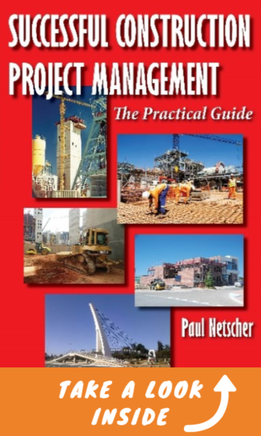 (Written by Paul Netscher the author of the acclaimed books ‘Successful Construction Project Management: The Practical Guide’ and ‘Building a Successful Construction Company: The Practical Guide’. Both books are available in paperback and e-book from Amazon and other retail outlets. This article is adapted from information included in these books.To see how Paul can help you visit Construction Management Services ) © 2022 This article is not to be reproduced for commercial purposes without written permission from the author.
Over the course of the last 3 weeks I’ve discussed ways in which construction companies can improve their cash flow position. Negative cash flow – the death for many construction companies, and How to improve cash flow on your construction projects - Part 1, and How to improve cash flow on your projects - Part 2 In this article I’ll discuss what contractors can do when they bid for their next construction project to improve their cash flow during the execution of the project. Contractors often become excited at the prospect of winning a new project and many don’t stop to consider if they have the finance to survive the negative cash flow that many construction projects entail. Often the bigger the project, the larger the cash flow strains your construction company will face. It’s important during the bidding stage that you prepare an accurate forecast of the anticipated cash flow for the project. If you are unable to sustain any negative cash flow affects it may be better to not price the project, or, you need to develop a strategy to mitigate the negative cash flow. In addition it is important to understand the payment terms and conditions in the contract. Unfortunately some contractors don't, then they get an unpleasant surprise when they have to wait an inordinately long time for their payment or when the payment terms and milestones are particularly onerous. #cashflow #contractors #constructioncashflow "Construction companies can do many things when pricing projects and submitting quotations to improve their cash flow" How to improve cashflow in your construction companyConstruction companies can do many things when pricing projects and submitting quotations to improve their cash flow such as: 1. checking that the client can meet their financial obligations on the project – this sounds straight forward yet it’s amazing how many construction companies end up working for a client who doesn’t have the funds to pay them In construction it’s important to know your clients. It could save you. 2. researching whether the client is known to pay the full value of the monthly valuations on time – some companies have a reputation for paying their contractors late, or, their projects end in legal disputes which could delay payments and also reduce the amount the contractor is eventually paid 3. negotiating more favourable payment terms which may include: a. negotiating to be paid interim valuations in the course of the contract b. arranging for the valuations to be paid within a shorter period than stipulated in the tender c. being able to submit invoices at an earlier date or more frequently d. the client withholding a lesser percentage as retention, or capping the amount of retention money withheld to a maximum value e. payment for materials which haven’t been built into the project but have been delivered to the project – this might be particularly relevant for expensive pieces of equipment f. replacing the retention money with a surety bond g. asking the client to provide a payment guarantee which could ensure that if they got into financial difficulties you could claim against it h. requesting the client to make an advance payment (particularly to cover the purchase of major items of equipment or material) i. structuring the project price in a manner that a larger portion of the project overheads are paid at the start of the contract, or that work done earlier in the project has a higher value than work done later (I’ve run many contracts with over-claims running in excess of a million dollars just by structuring the tender correctly and ensuring that our monthly progress valuations were maximised) 4. requesting the client release retention money earlier by: a. shortening the duration it’s held b. releasing it in tranches as interim milestones are achieved 5. reducing the value of the guarantees 6. allowing the guarantees/bonds to be released earlier or when important interim milestones have been achieved 7. understanding if the value of the project is going to grow substantially – now most contractors love it when the value of their contract grows, but this could place additional strains on your cash flow, particularly if the value of retention money increases, and the sureties are withheld for a longer period 8. understanding the risk of the contract schedule being extended – again this is often in the contractors favour if they are able to agree variations for this extension, however it will mean that retention money and sureties/bonds will be held for a longer period which could impact cash flow 9. understanding when the final completion date is – this is particularly important for subcontractors, since in some contracts the general contractor (main contractor) may specify a completion date linked to their completion date and not when the subcontractor’s work is completed – again this may impact final payments and release of retention monies 10. preparing a cash flow forecast which is based on the schedule, when payments will be made and when costs will have to be paid 11. checking the payment terms and conditions for suppliers and subcontractors that have quoted for the work – some of these may be substantially different to your terms with the client, and in some cases specialist suppliers may demand upfront payments As an incentive to the client you may need to give them a discount for agreeing to better payment terms. This discount could also make your price more attractive compared with your opposition. Often it may be necessary to explain to the client why they won’t be disadvantaged or the project put at risk by agreeing to slightly different terms. #pricingconstructionprojects #constructionmanagement #constructionfinance "Once the construction contract is in place it is impossible to modify the contract terms and conditions" Once the construction contract is in place it is almost impossible to modify the terms or conditions with the client so it is important to agree all the terms and conditions before signing the contract. Don’t start construction projects without a proper contract A little extra thought when preparing and submitting your price could make a substantial difference to your company’s cash flow later. Thank you for reading this article. If you found it useful please like or share it. Please add your comments so we can all learn from your experiences. 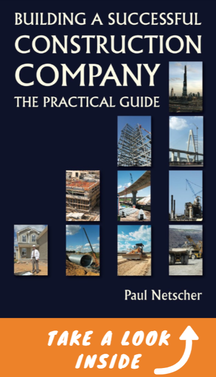 (Written by Paul Netscher the author of the acclaimed books ‘Successful Construction Project Management: The Practical Guide’ and ‘Building a Successful Construction Company: The Practical Guide’. Both books are available in paperback and e-book from Amazon and other retail outlets. This article is adapted from information included in these books.) "I have what I consider some of the best books on construction management. Thanks for sharing what you have learned." (Reader Amazon.com) © 2022 This article is not to be reproduced for commercial purposes without written permission from the author.
Did you make a difference on your construction project today? This seems a strange question and I’m sure most will respond with an emphatic ‘yes’. However, I challenge you to answer the same question on your way home tonight and I expect at least half of you might struggle to answer truthfully in the affirmative. "Are you proud of what you achieved on your construction project today? Or could you have done better?" Construction project managers ask yourself these questions Ask yourself these simple questions To help you decide how much of a difference you really made, answer these simple questions.
Congratulations if you said yes to most of these questions. Your construction project should be a success. What else did you achieve? Please add your comments. Become a better construction project manager"Take time to stand back and plan your project and implement steps that will make a difference." Unfortunately many of us can work hard all day, be rushed off our feet solving problems on our construction projects, answering emails, attending meetings, yet, without really making a significant difference to the project. Take time to stand back and plan your project and implement steps that will make a difference. Look at your project with new eyes. Many of the actions take only a couple of minutes from your day, yet can make an enormous impact to your project, your company and probably your career. This message is particularly important for those managers who aren’t full time on a project, that make whirlwind visits to site, and then leave making very little difference, or even in some cases, leave more mess, resentment, confusion and uncertainty behind. Even if you just get into the habit of actively looking and making one remark about; safety, quality, productivity and another item, you’ll get into the habit of looking at your projects with new eyes. But remember though, it doesn’t all have to be negative, and always ask if the project needs help or advice! #constructionmanagementtips #constructionprojectmanagement #constructionquality "Tomorrow is a new day. Make you construction project a success. Make a difference." Continually ask the question; “What difference did I make to my construction project today?” Tomorrow is a new day. Make you construction project a success. Make a difference. "I highly recommend this book be read by all newly qualified construction project managers as well as those more experienced." (Reader Amazon.co.uk)  (Written by Paul Netscher the author of the acclaimed books ‘Successful Construction Project Management: The Practical Guide’ and ‘Building a Successful Construction Company: The Practical Guide’. Both books are available in paperback and e-book from Amazon and other retail outlets. This article is adapted from information included in these books. Read more about Paul Netscher or see how Paul can help you visit Construction Management Services.) © 2022 This article is not to be reproduced for commercial purposes without written permission from the author.
|
Archives
June 2024
Note: We welcome genuine comments, especially comments that add additional information to the subject matter in the article. We however reserve the right to remove inappropriate comments, which includes comments that have nothing to do with the subject, comments that include inappropriate language, and comments that are an advertisement for a product or company, or which include an advertising link. Comments must be in English. We will not enter into discussion on why a particular comment was removed.
CategoriesCopyright 2016 - The attached articles cannot be reproduced for commercial purposes without the consent of the author.
The opinions expressed in the attached articles are those of the writer. It should be noted that projects are varied and different laws and restrictions apply which depend on the location of the contractor and the project. It's important that the reader uses the supplied information taking cognisance of their particular circumstances. The writer assumes no responsibility or liability for any loss of any kind arising from the reader using the information or advice contained herein. "I have what I consider some of the best books on construction management."
Books are available from: Amazon.com Amazon.co.uk takealot.com kalahari.com Amazon.in Amazon.de Amazon.fr Amazon.it Amazon.com.au Powell's Fishpond uread bokus Amazon.ca Amazon.es Other retail stores Available in paperback or on Kindle "28 YEARS OF CONSTRUCTION PROJECT MANAGEMENT EXPERIENCE, DEVELOPING SUCCESSFUL CONSTRUCTION PROJECT MANAGERS AND BUILDING SUCCESSFUL CONSTRUCTION COMPANIES"
|

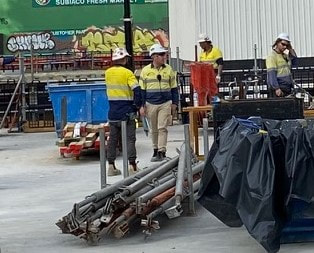

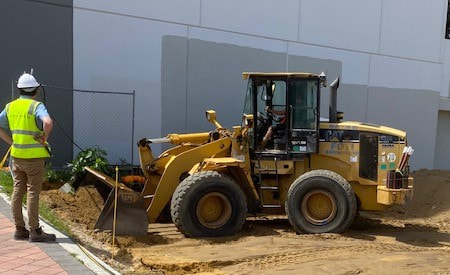
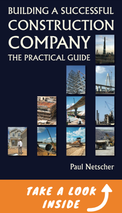
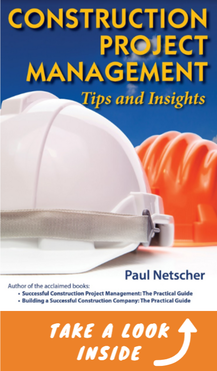
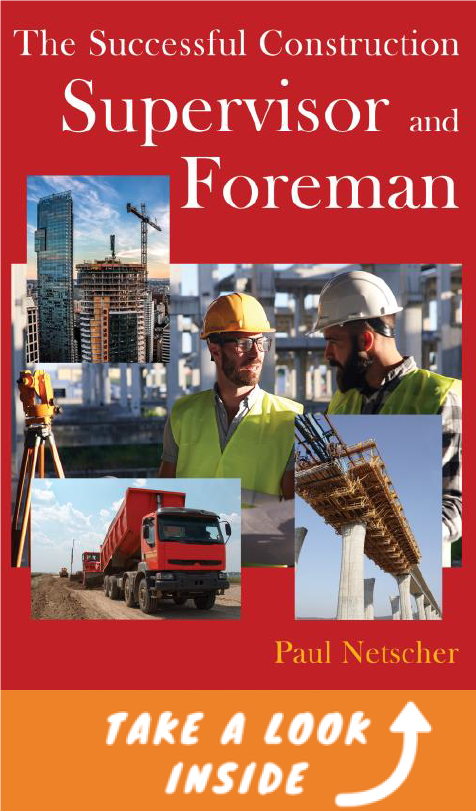
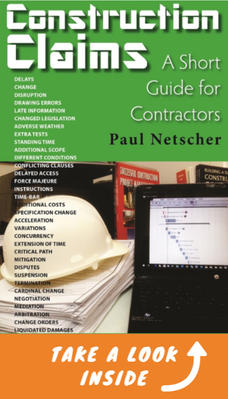

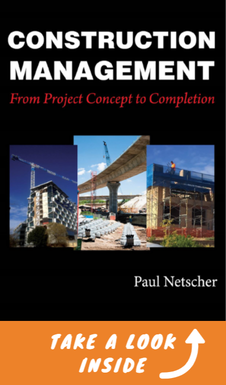

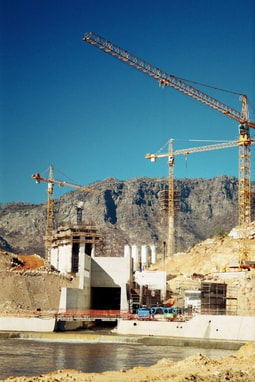
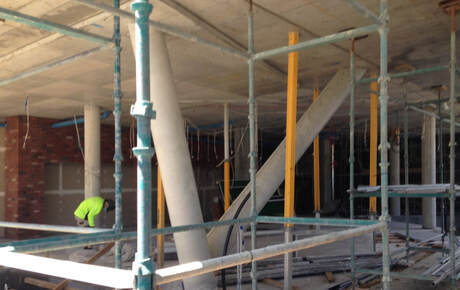
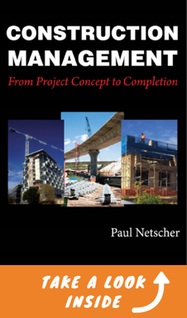

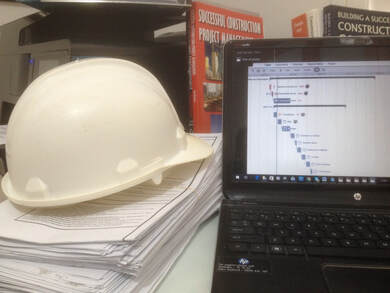
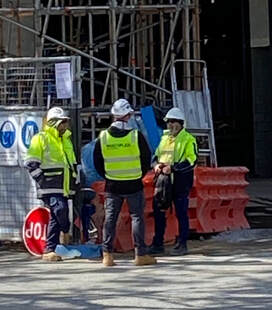

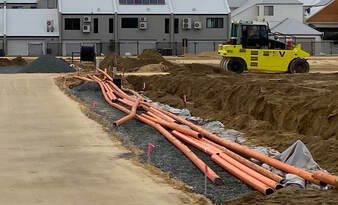


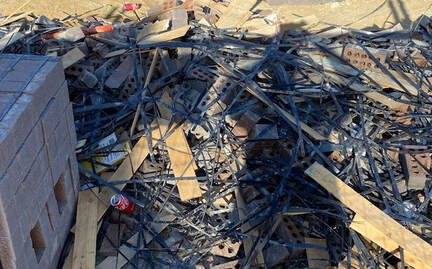
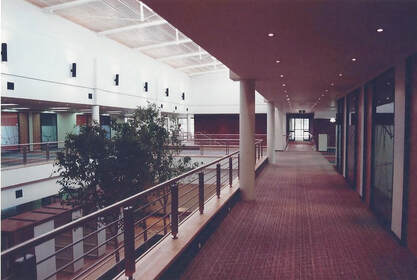
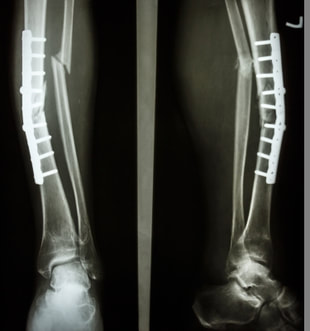

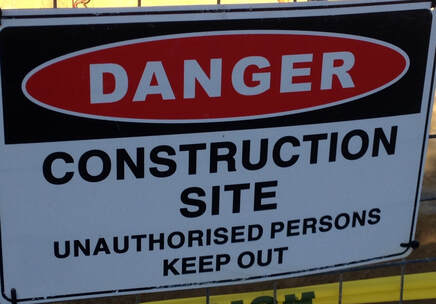
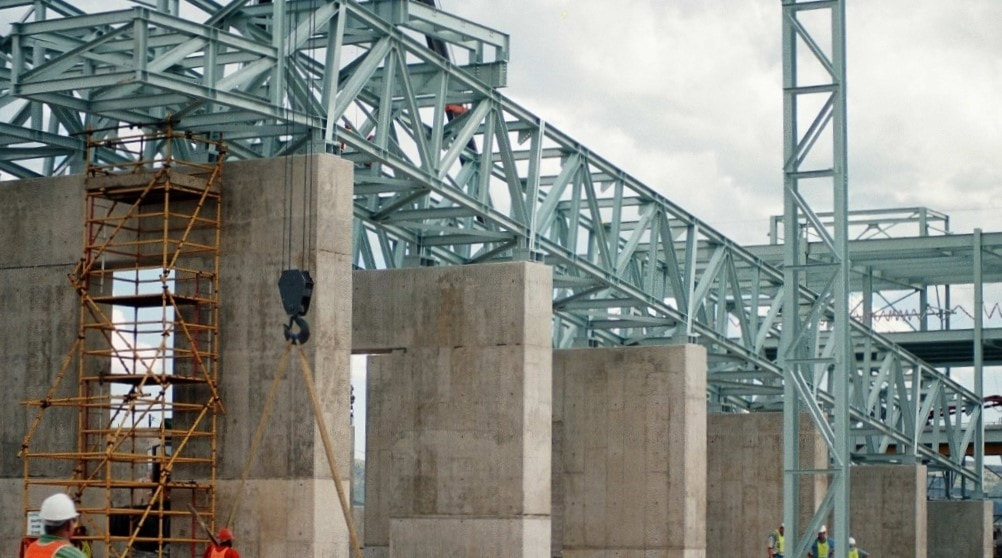





 RSS Feed
RSS Feed




